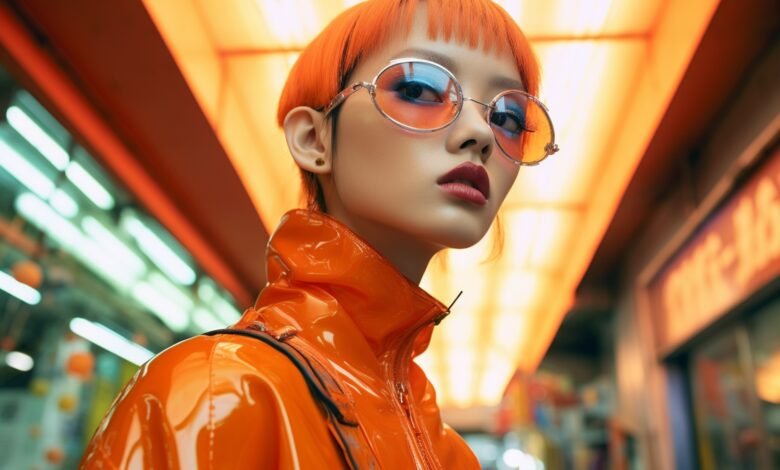
In the rapidly evolving world of fashion, creativity knows no bounds. Designers continually push the envelope, merging art, technology, and sustainable innovations to redefine what fashion can be. Among the most revolutionary movements is the avant-garde fashion scene, which has always been synonymous with breaking traditions and embracing experimental aesthetics. As we peer into the future of this genre, the possibilities for avant-garde fashion extend far beyond mere garments. Futuristic avant-garde fashion concepts embody a vision of fashion that transcends the human body and engages with the environment, sustainability, and technology on a deeper level.
Table of Contents:
- The Essence of Avant-Garde Fashion
- Technology Meets Fashion: The Digital Revolution
- Sustainability and Ethical Futurism
- The Integration of Art and Fashion
- Wearable Technology: Fashion as a Second Skin
- Body Augmentation and Fashion
- Exploring Italian Influence on Futuristic Avant-Garde Fashion
- How Futuristic Avant-Garde is Reshaping Couture
- Visuali Exotica: Modern Avant-Garde Fashion Concepts
- What’s Next for Avant-Garde Fashion?
The Essence of Avant-Garde Fashion
Avant-garde fashion has always been at the intersection of fashion and art, challenging traditional norms and pushing the boundaries of aesthetics. Originating from the French term meaning “advance guard,” avant-garde artists and designers often reject mainstream trends in favor of creating pieces that stimulate thought and provoke reactions. This movement has shaped fashion houses such as Alexander McQueen, Rei Kawakubo of Comme des Garçons, and Iris van Herpen, all of whom have made bold statements through their innovative and unconventional creations.
In futuristic terms, avant-garde fashion becomes even more radical. Designers explore a world where the lines between fashion, technology, and humanity blur. With advancements in material science, 3D printing, augmented reality, and wearable technology, the future of avant-garde fashion is not just about making a statement—it’s about redefining the human experience in a digitally enhanced world.
Technology Meets Fashion: The Digital Revolution
One of the most exciting aspects of futuristic avant-garde fashion is its integration with technology. The fashion world is currently experiencing a digital revolution, where designers and brands are incorporating elements like 3D printing, virtual reality, artificial intelligence, and smart fabrics into their creations.
- 3D Printed Garments: Designers such as Iris van Herpen have popularized the use of 3D printing in haute couture. This technology allows for intricate, sculptural designs that are impossible to achieve with traditional sewing techniques. In the future, we can expect to see more avant-garde pieces that are created entirely from 3D printers, merging fashion with architecture to form wearable art.
- Virtual and Augmented Reality: As fashion increasingly migrates to digital platforms, virtual reality (VR) and augmented reality (AR) are playing significant roles in both retail and runway experiences. Brands are exploring virtual fashion shows, where garments defy the laws of physics and space. This immersion into a virtual fashion realm allows consumers to experience avant-garde fashion in ways that weren’t possible before.
- Artificial Intelligence in Fashion Design: AI algorithms are now being used to analyze trends, predict future fashion movements, and even design collections. Some designers use AI to create innovative, futuristic fabrics that change colors or react to environmental stimuli. This level of personalization and adaptability will certainly define avant-garde fashion as it evolves.
Sustainability and Ethical Futurism
Sustainability is no longer a buzzword in the fashion industry but an urgent call to action. Futuristic avant-garde fashion emphasizes not only aesthetic innovation but also environmental responsibility. As the climate crisis becomes increasingly pressing, fashion designers are leading the charge in creating sustainable fashion that doesn’t compromise on creativity.
- Biodegradable and Regenerative Fabrics: Pioneering designers are working with plant-based materials, biodegradable fibers, and regenerative fashion techniques. Examples include mushroom leather (mycelium), algae-based fabrics, and even spider silk. These materials can be grown, harvested, and used without leaving a large carbon footprint, aligning avant-garde fashion with environmental stewardship.
- Zero Waste Fashion: Some avant-garde designers are crafting clothing that is completely zero-waste, utilizing every scrap of material in a garment. Futuristic fashion will likely see more innovation in this area as designers continue to find creative ways to reduce waste, including modular clothing pieces that can be disassembled and reassembled into different outfits.
By focusing on sustainability, futuristic avant-garde fashion fuses innovation with ecological responsibility, paving the way for a greener, more ethical fashion landscape.
The Integration of Art and Fashion
Fashion has always had a close relationship with art, with many avant-garde designers considering their work as wearable art pieces. In the future, this intersection will only deepen as technological advances allow designers to express even more abstract and complex ideas. Futuristic avant-garde fashion transcends mere clothing—it becomes an art form that communicates stories, emotions, and visions of the future.
- Wearable Sculptures: Designers such as Issey Miyake and Hussein Chalayan have long explored the notion of fashion as sculpture. In the future, 3D printed wearable sculptures will become more common, creating garments that are part artwork, part clothing. These pieces will offer a new experience of fashion, one that challenges the traditional function of clothing.
- Interactive Fashion: With the rise of interactive technologies, garments may soon be able to react to their environment or the wearer’s emotions. Imagine a dress that changes color based on the mood of the person wearing it or a jacket that adapts to the temperature around it. This marriage of fashion and art, enabled by technology, will push avant-garde fashion to new dimensions.
Wearable Technology: Fashion as a Second Skin
Wearable technology has already made its way into mainstream fashion through devices like smartwatches and fitness trackers. However, avant-garde designers are taking this concept to the next level by creating clothing that integrates seamlessly with the human body, turning fashion into a form of bio-technology.
- Smart Fabrics: The future of avant-garde fashion lies in fabrics that can monitor vital signs, track movement, and even generate electricity from body heat. These smart materials could be used for both aesthetic and functional purposes, blurring the line between fashion and health technology. Designers are exploring the use of smart fabrics to create garments that not only look striking but also serve practical, life-enhancing functions.
- Self-Healing Materials: In the realm of futuristic fabrics, self-healing materials offer a glimpse into fashion’s potential future. These textiles can repair themselves after minor damage, extending the longevity of garments and contributing to sustainable fashion practices. For avant-garde designers, such materials offer endless possibilities for creating resilient, innovative clothing that evolves alongside human needs.
Body Augmentation and Fashion
A key element of futuristic avant-garde fashion is its focus on body augmentation. As technology advances, fashion designers are starting to explore how garments can extend the body’s capabilities, turning fashion into a form of body enhancement.
- Exoskeletons and Prosthetics: Designers such as Anouk Wipprecht have already experimented with integrating robotics and fashion to create pieces that move with the body. In the future, we can expect to see more avant-garde fashion designs that incorporate exoskeletons and prosthetics, enhancing the wearer’s physical abilities while also making bold aesthetic statements.
- Fashion and Biotechnology: As biotechnology evolves, designers may begin to incorporate living organisms into their designs, creating clothing that breathes, grows, or changes with the environment. These futuristic garments would blur the line between fashion and biology, creating a new era of living, breathing clothing.
Exploring Italian Influence on Futuristic Avant-Garde Fashion
Italy has long been at the forefront of fashion, known for its craftsmanship, luxury fabrics, and trend-setting designs. But beyond its historical fashion capital status, Italy is also home to avant-garde designers who are shaping the future of fashion. Designers like Rick Owens and Iris van Herpen (who frequently collaborates with Italian craftsmen) embody the avant-garde spirit with futuristic designs that challenge traditional silhouettes.
- Italian Craftsmanship Meets Futurism: Italian fashion houses are increasingly merging traditional craftsmanship with cutting-edge technology. Futuristic avant-garde designers often turn to Italy for high-quality materials and expert artisans, but instead of creating classic pieces, they use these elements to craft radical, forward-thinking garments.
- The Milan Influence: Milan, a major global fashion capital, has always been a hub for experimentation. Milan Fashion Week regularly showcases avant-garde designs that predict the future of fashion. Futuristic avant-garde designers from Italy are known for blending tradition with radical innovation, pushing the limits of design while staying rooted in the country’s rich fashion history.
This fusion of heritage with technology, seen across Italy’s evolving fashion landscape, ensures that the country will remain a leader in avant-garde and futuristic fashion concepts.
How Futuristic Avant-Garde is Reshaping Couture
Avant-garde fashion has long influenced haute couture, and the future will see this relationship deepen. As designers explore new materials, technologies, and concepts, couture will evolve into a space where fashion is not only hand-crafted and luxurious but also experimental and futuristic.
- Non-Traditional Couture Materials: The use of unconventional materials such as metals, plastics, and 3D printed elements in haute couture will only increase in the future. Designers will continue to push boundaries by integrating these futuristic materials into intricate designs that challenge traditional notions of what couture can be.
- Transformative Couture: The future of avant-garde couture lies in garments that can transform themselves. Imagine a gown that changes shape or color at the touch of a button, or a jacket that morphs into different silhouettes throughout the day. This concept of transformative fashion will redefine haute couture as we know it, taking luxury and customization to the next level.
Visuali Exotica: Modern Avant-Garde Fashion Concepts
If you’re looking for cutting-edge fashion that embraces the futuristic vision of avant-garde design, Visuali Exotica by STNMTL is where you need to explore. With a deep focus on bold, innovative concepts, Visuali Exotica offers pieces that challenge conventional fashion while celebrating modernity and individuality.
Their collections draw inspiration from the ever-evolving Italian fashion scene, blending high-quality materials with unconventional silhouettes, experimental structures, and futuristic designs.
Visit Visuali Exotica and discover how they are shaping the future of fashion. Whether you’re interested in wearable art or the latest in avant-garde aesthetics, their designs are at the forefront of modern fashion innovation. Explore their vision of the future, and let them redefine your wardrobe with cutting-edge concepts that embody both style and substance.
What’s Next for Avant-Garde Fashion?
The future of avant-garde fashion is boundless. As technology continues to advance, designers will increasingly explore the fusion of fashion with science, art, and sustainability. From garments that respond to the environment to outfits that blur the lines between human and machine, avant-garde fashion will continue to challenge traditional norms and push fashion forward into unexplored realms.
As we venture into this exciting future, the avant-garde movement will undoubtedly lead the way, daring us to reimagine not just fashion, but our relationship with the world around us. By embracing bold new concepts, futuristic materials, and sustainable practices, avant-garde designers are laying the foundation for the next era of fashion, one that is as thought-provoking as it is beautiful.

